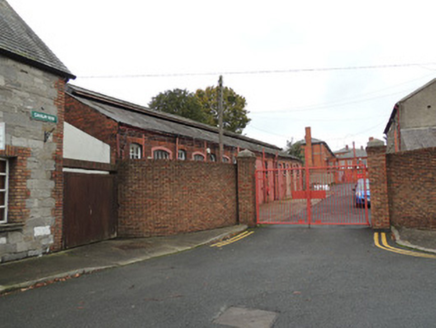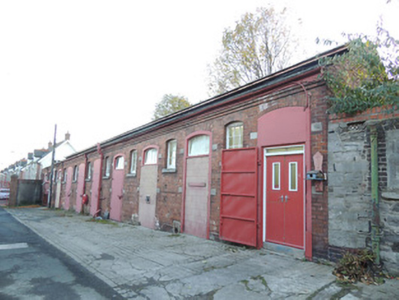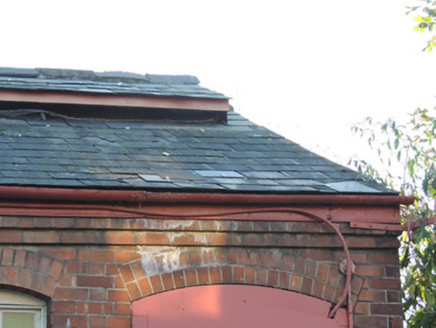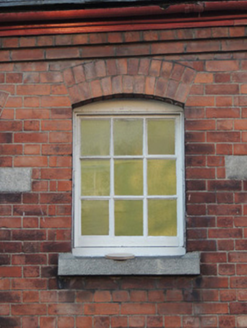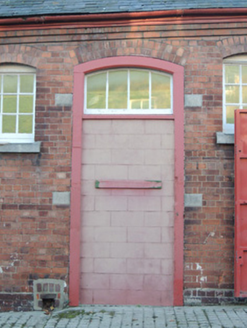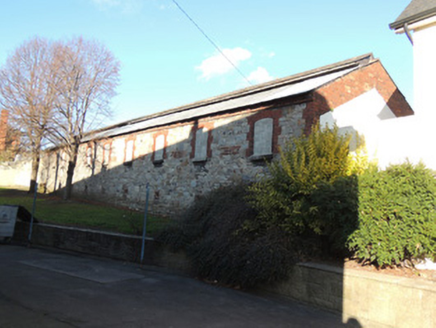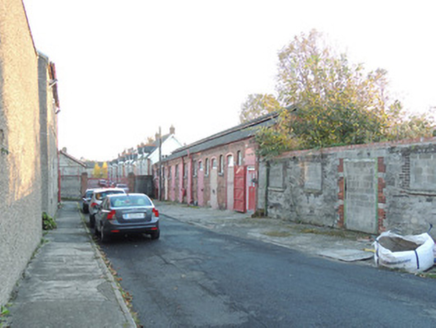Survey Data
Reg No
50070106
Rating
Regional
Categories of Special Interest
Architectural, Historical, Social
Previous Name
King George V Hospital
Original Use
Stables
In Use As
Workshop
Date
1800 - 1840
Coordinates
313892, 234696
Date Recorded
04/11/2012
Date Updated
--/--/--
Description
Attached ten-bay single-storey former military stables, built c.1820, now in use as workshop. Pitched roof with raised central vent, having slate to east pitch and replacement corrugated sheeting to west, cast-iron rainwater goods. Red brick walls to front (east) elevation, laid in Flemish bond, having brick eaves and plinth course. Rubble calp limestone walls to west elevations, having red brick eaves course, quoins, waste drains and elliptical-headed block-and-start window surrounds. Elliptical-headed window opening and door opening to each stable bay of east elevation. Brick voussoirs to window openings, having timber-framed nine-pane window and cut granite sill. Quadripartite overlight with brick voussoirs over door opening, some with replacement steel door, some door openings blocked with concrete blocks. Recent red brick wall to south, former terrace visible on south and north gable ends. Located south of Saint Bricin’s Military Hospital.
Appraisal
This red brick former stable building was finely constructed on a slope, and is a fine example of the attractive utilitarian buildings constructed by the Royal Engineers throughout the eighteenth and nineteenth centuries. The stables relate to the complex of military buildings which once survived in the immediate vicinity, including the former Royal Barracks to the south, the former Arbour Hill detention barracks to the south-east and Saint Bricin’s military hospital to the north. The former stable block faces east to the former Provost Marshal’s House and Provost Prison, in which members of the United Irishmen were incarcerated and Wolfe Tone died in 1798. The new Saint Bricin’s Military Hospital was built to the north from 1902, and first occupied in 1913, when it became known as King George V Hospital. The former stables came to be disused due to the decline in cavalry in the twentieth century, and the building is now utilised as maintenance offices and workshops.
